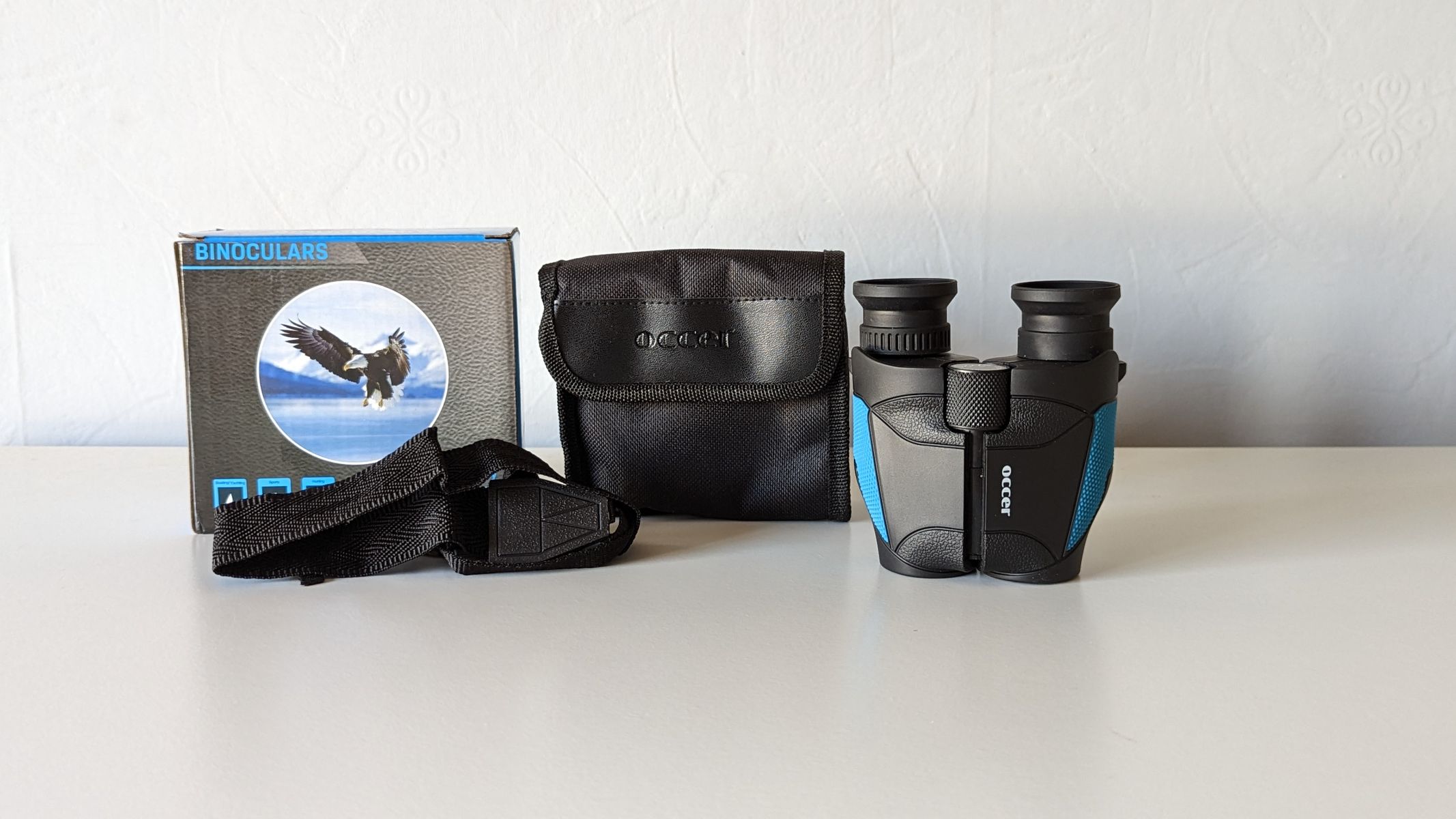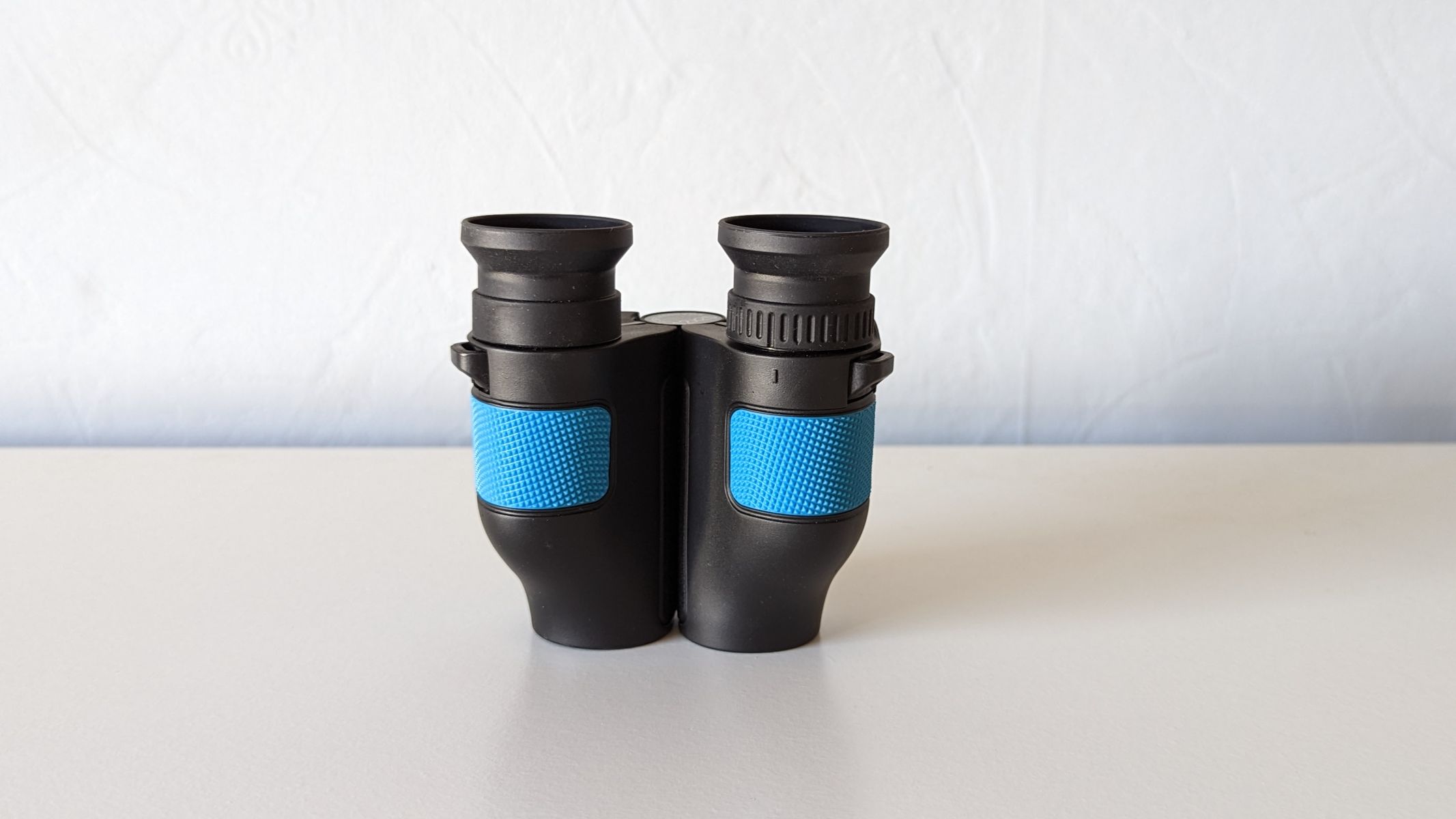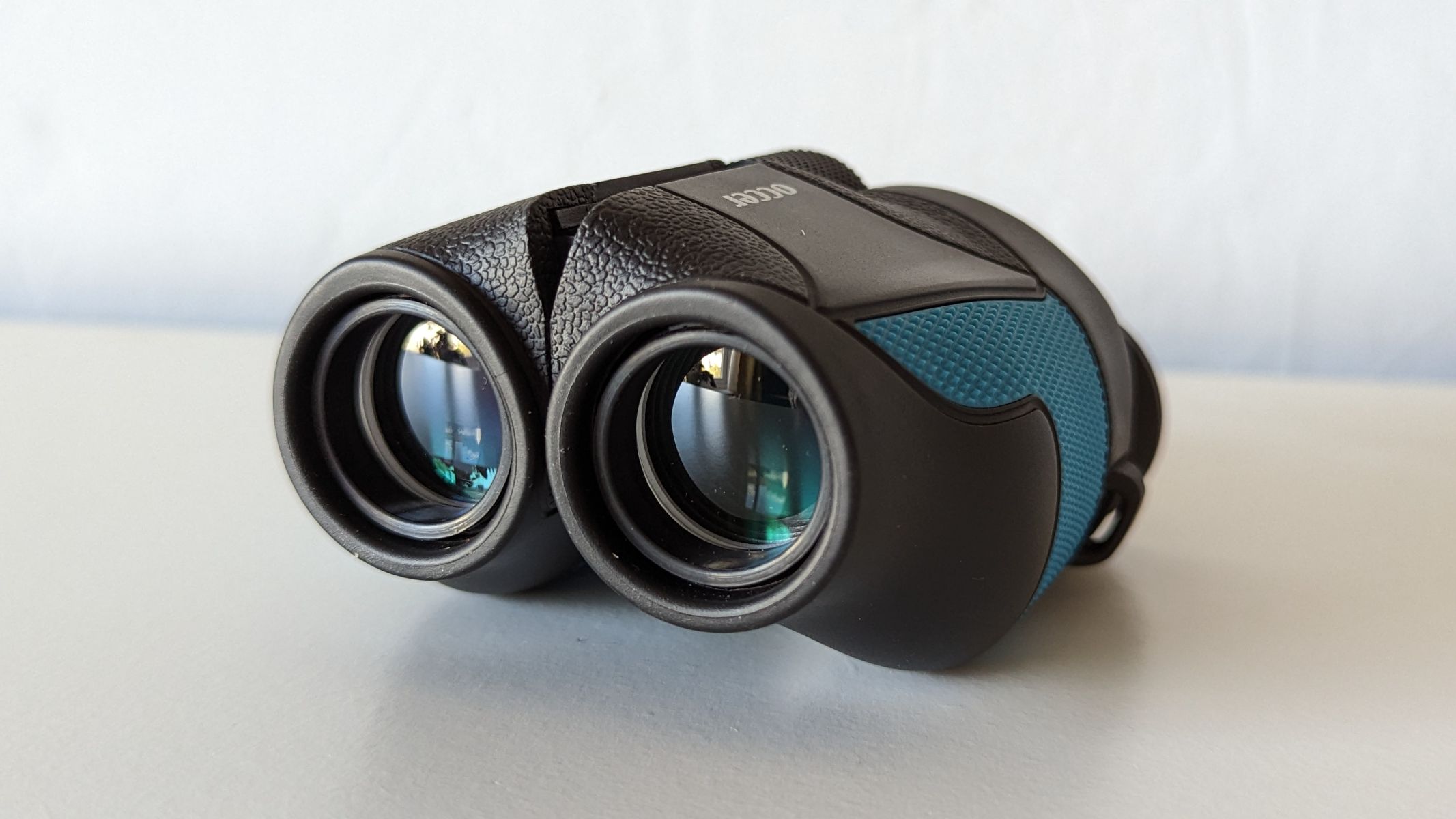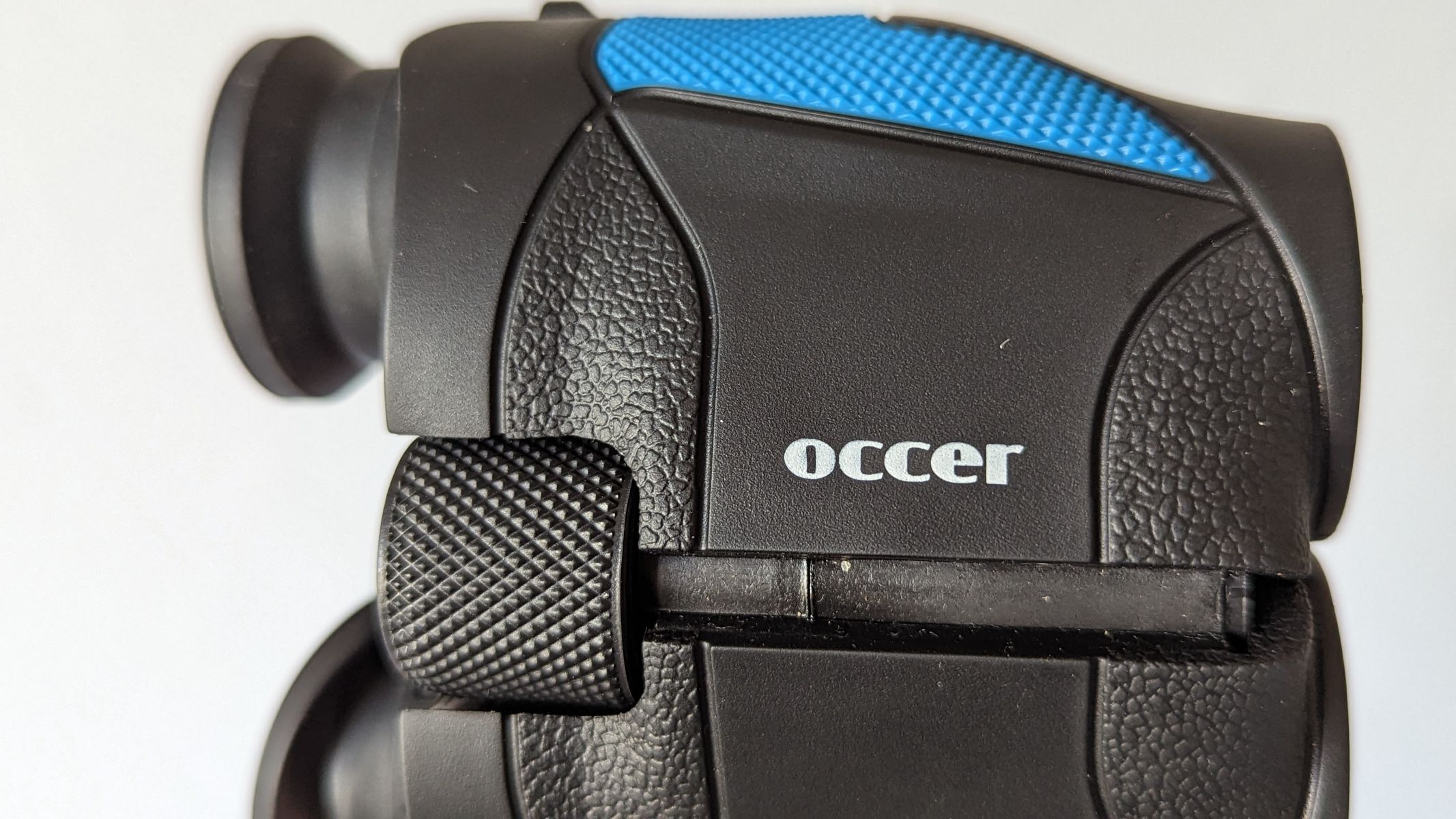Live Science Verdict
Ridiculously compact, we would've expected these relatively unknown binoculars to perform somewhat more like a toy, but no, they pack an optical punch which we weren't expecting.
Pros
- +
Sharp BaK-4 glass
- +
Incredibly small design
- +
Good textured grip
Cons
- -
Eyecup relief minimal
- -
Minimal waterproofing
- -
Flip-down eyecups are flimsy
Why you can trust Live Science
We hadn't reviewed any of Occer's binoculars before now and considering their price and flashy colors we'd assumed (wrongly) that they would be full of gimmicks and marketing spiel but otherwise be a letdown when it comes to performance. However, the Occer 12x25 binoculars produce some outstanding views (for the price) and are small and convenient enough to use in any situation.
Design: Reverse porro prism
Magnification: 12x
Objective lens aperture: 25mm
Angular field of view: 273 degrees
Eye relief: 15mm
Weight: 8.8oz / 249g
Dimensions: 110 x 50mm
Perfect for quick observations by adults but also suited to the smaller hands of young children these are good binoculars for kids, and they come in bright colorways which are attractive to young and older alike.
The binoculars ship with a soft carry case and a neckstrap both of which are useful if you plan on taking them out in the car or on hikes where you'll want to store them safely away. Keeping them safe is key for reasons we'll explain in our design round-up below, especially if you want to keep these binoculars working effectively long-term.
12x magnification is useful for observing things in the wide-field and while the 25mm objective lenses don't gather much light (they're not ideal in low light situations) it does make them ultra portable. In the market for something a little larger, or willing to invest in a quality pair? Try taking a look at our best binoculars buying guide which outlines the best we've tried and tested.
Occer 12x25 binocular: Design
- Ultra-portable thanks to its compact design
- Objective lenses are semi-protected
- Good texturized rubber grip to prevent slipping and dropping
At first glance, you'd be forgiven for thinking that the Occer 12x25 binoculars are just a gimmick, throw-away toy binocular designed for children. Of course, the model we've reviewed here come in bright blue and are particularly eye-catching and the box they ship in seem non-descript and rather amateurish. But this is where the gimmick feels stop.
Utilizing a reverse porro prism design, the Occers are wider than they are long and are constructed with a resilient hard plastic with firm rubber grips on either side of the tubes. They feel legitimately sturdy in the hand which surprised us when we first used them.
There's nothing small, fragile or dainty that sticks out from the body of the binoculars that would get easily knocked or broken off and this design is particularly effective for use by kids who are prone to wielding them unfavorably.
Get the world’s most fascinating discoveries delivered straight to your inbox.
The binoculars themselves are very simple to operate and have no more features than you would expect on a simple binocular. With a diopter on the right tube and a focusing knob on the top, the lenses are recessed into the plastic body so as to prevent accidental knocking while in use.
Occer 12x25 binocular: Performance
- Some chromatic aberration (color fringing)
- The interpupillary distance range is restrictive
- Relatively sharp views with BaK-4 glass
We're not sure if we've ever been more surprised by the optical performance of a pair of compact binoculars. If you can find them at the right price (this means south of $40 in our books) then there's nothing to complain about. For what they are, which is an ultra-portable binocular you can take almost anywhere with you by slipping them into your bag or a large jacket pocket, they'll do in a pinch.
Sure, there are some downsides despite the BaK-4 glass inside (which is considered superior to BK-7 glass often found in inexpensive pairs). There's a middling amount of chromatic aberration, otherwise known as color fringing. Now, we think this would be an issue if the binoculars had greater magnification because the fringing, which is mostly of magenta and yellow, would probably be much more apparent. But because these provide a wide-field view the aberrations around contrasted edges aren't really that noticeable to the untrained eye.
We did find it particularly difficult to nail the focus when using these binoculars though. Even after setting up the diopter adjustment so that both eyepieces were in focus for our eyes it felt as if something was a little amiss. Every time we came away from observing through the binoculars we felt a little cross-eyed. But then again, this could be to do with the restrictive interpupillary distance which we'll cover more in the functions section below.
Overall, we wouldn't recommend them for low light observations due to the restrictions in place from the 25mm objective lenses, but for general daytime viewing of wildlife, sports or aviation they'll do fine. They are a little soft around the very edges of the image circle producing quite obvious coma aberration but again, because these aren't binoculars designed for stargazing we don't think it's that big of a deal (check out our best binoculars for stargazing guide if you need something for night use).
Occer 12x25 binocular: Functionality
- Interpupillary distance should be addressed
- Flip-down eyecups a little flimsy
- Clever design to account for lack of lens caps
Ordinarily binoculars ship with a carry bag and neckstrap plus maybe a manual and cleaning cloths or other accessories if you're lucky. However, one thing we would normally expect to see in almost every box of binoculars are lens caps. However, Occer has omitted caps from the 12x25 model, but we think we know why.
Being supremely tiny even when placed in the soft carry case that ships with the Occer's they'll easily slip into any bag or even larger jacket pockets. Due to that the optical elements that are exposed to the air (the eyepieces and objective lenses) are fairly well protected against the elements. But what happens when you're using them?
Taking a look at the front elements (the objective lenses) they are recessed quite far into the binocular casing for a binocular of this size. We measure the objective lenses sitting around 0.39-inches (10mm) into the casing. That, plus the added expense of shipping lens caps that fit with this design (they would have to sit inside the lens mounts instead of around the tubes like most other binoculars) are the reasons we think Occer has decided to omit the lens caps.
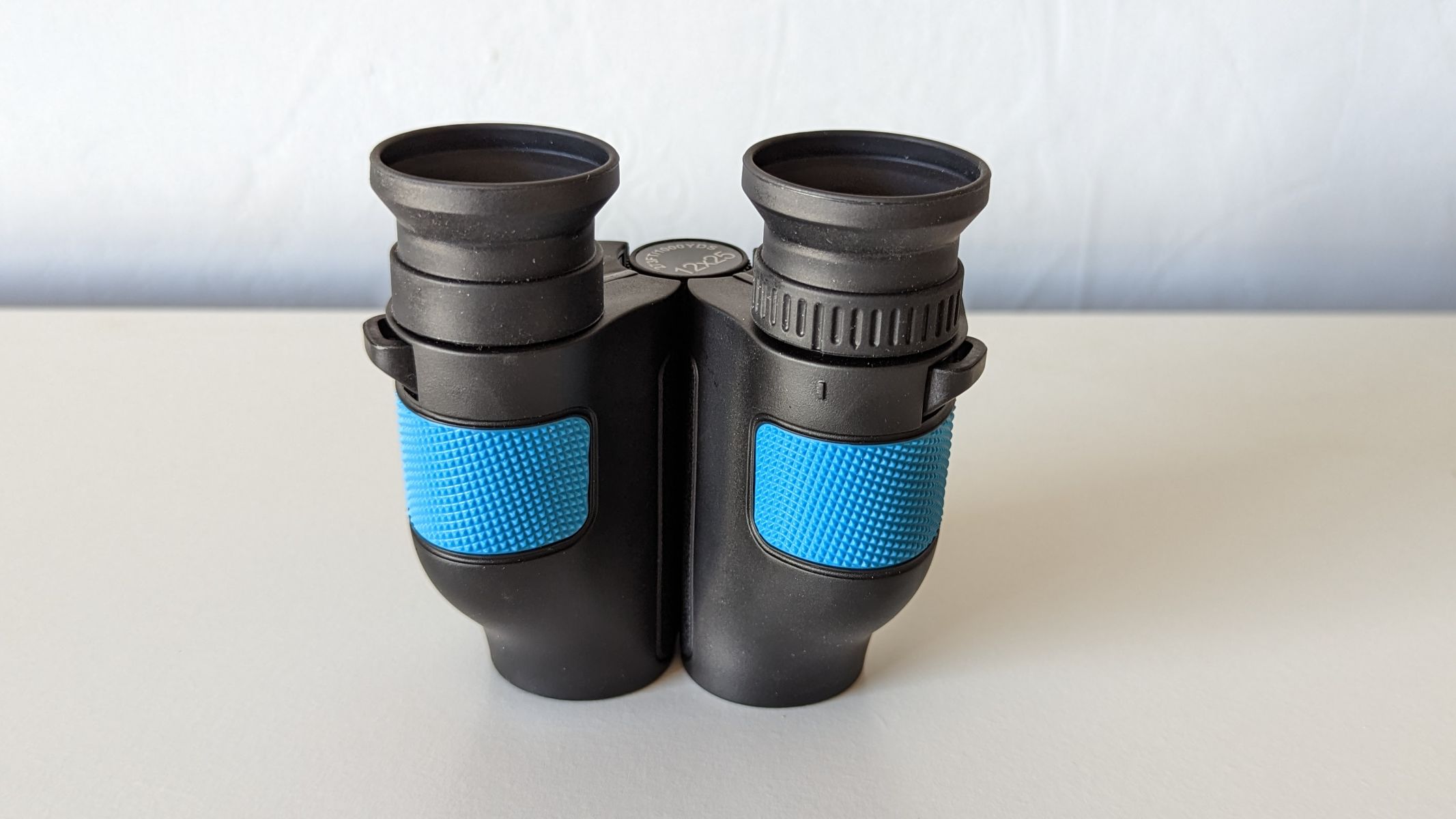
Even taking into account the small frame of these binos, the interpupillary distance (the distance between the two eyepieces which can be adjusted by pivoting them at the central hinge) is still too restrictive. Those with narrow-set eyes or children with smaller heads, may struggle to get a perfect view through the eyepieces and instead see darkening around the edges of the image circle also known as vignetting. For most, it won't be an issue, but it's something to bear in mind for the minority.
Should I buy the Occer 12x25 binocular?
If you're looking for a compact binocular that is suitable for children, feels robust in the hand and is small enough to slip into your jacket when out and about, we'd be happy to recommend the Occer 12x25's.
Views are sharp and relatively bright thanks to the BaK-4 glass inside and the reverse porro prism design is chunky and satisfying to handle. If you're looking for high quality views or want to use binoculars in low light we would avoid them though as there are better binoculars on the market, even if they cost a little more.
If this product isn't for you
Spend another hundred bucks and grab the Nikon Prostaff P3 if you like everything on the Occer's but want them enhanced, improved and refined. Nikon has been making lenses for well over a hundred years and it shows in the P3's. They're bigger than the Occer's but still slim and lightweight thanks to the roof prism design. They have much better eyecup adjustment and greater eye relief for spectacles wearers, too.
If you want the best of the best you can't go far wrong with the Canon 10x42L IS WP but at over $1000 they'll be out of the reach of many readers' budgets. That said if you get the chance to try them they have incredible image stabilization technology which changes the game regarding binocular observations.
Sitting somewhere between the two to maximize portability and optical performance we'd recommend taking a look at the Olympus 8x42 Pro binoculars which we've given four out of five stars in our review and sit at number two in our best binoculars buying guide due to their oil-repellent lens coatings and waterproofing plus their good build quality.
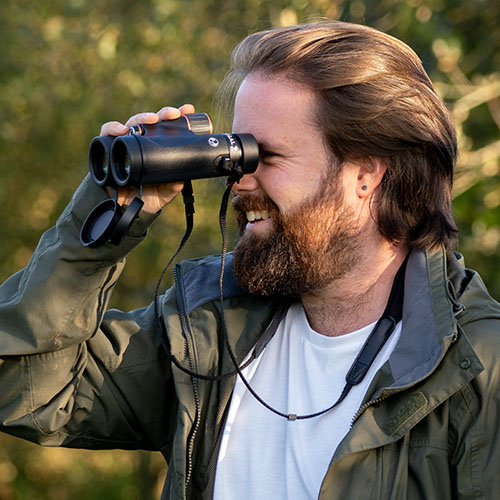
Jase Parnell-Brookes is the Managing Editor for e-commerce for Live Science and Space. Previously the Channel Editor for Cameras and Skywatching at Space, Jase has been an editor and contributing expert across a wide range of publications since 2010. Based in the UK, they are also an award-winning photographer and educator winning the Gold Prize award in the Nikon Photo Contest 2018/19 and named Digital Photographer of the Year in 2014. After completing their Master's degree in 2011 and qualifying as a teacher in 2012, Jase has spent the last two decades studying and working in photography and publishing in multiple areas, and specializes in low light optics and camera systems.
